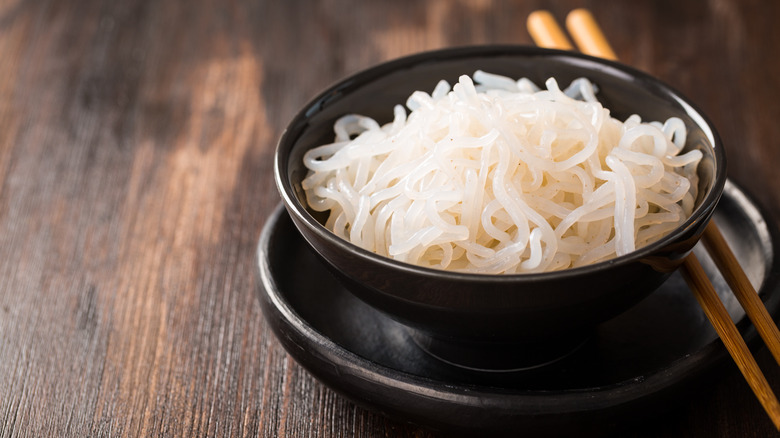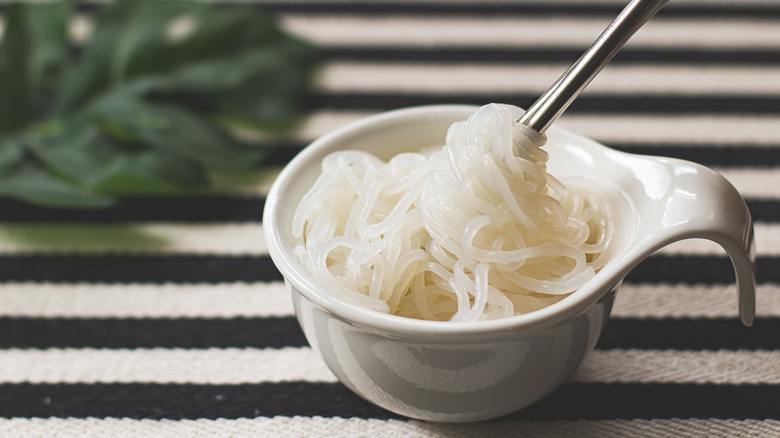Are Shirataki Noodles Really Healthy For You?
Shirataki noodles are long, white noodles made from glucomannan — a type of fiber derived from the root of the konjac plant. Native to Japan, konjac is a variety of yam that gets most of its carbohydrates from glucomannan, which acts as a dietary fiber in the digestive system (via Healthline).
Glucomannan is a soluble fiber that can absorb quite a bit of water. In fact, noodles made from glucomannan are 97% water and 3% fiber. Glucomannan is also indigestible, which means it cannot be broken down and used as energy. This means that shirataki noodles are low in both calories and carbohydrates and can be part of a healthy and well-balanced diet. That's why they're often referred to as miracle noodles. You can make shirataki noodles by mixing glucomannan flour with regular water and lime water and boiling the mixture. Once the mixture is boiled, you can shape it into noodle-like pieces.
Health benefits of shirataki noodles
Since shirataki noodles are so low in calories and carbohydrates, they can be a healthier alternative to regular noodles and pasta (via WebMD). This can be especially helpful for people following the keto diet or for those who are sensitive or allergic to gluten. Eating shirataki noodles can also help you manage your weight and may even promote weight loss.
"Their viscous fiber delays stomach emptying, so you stay full longer and end up eating less," Beth A. Czerwony, a registered dietitian with Cleveland Clinic's Center for Human Nutrition, told Parade. "Fermenting fiber into short-chain fatty acids can stimulate the release of a gut hormone (leptin) that increases feelings of fullness and has been found to reduce levels of the hunger hormone ghrelin."
Furthermore, shirataki noodles can help aid digestion and promote colon health. That's because the fiber in the noodles can help relieve constipation, keep you regular, and promote the growth of healthy bacteria in the colon.


